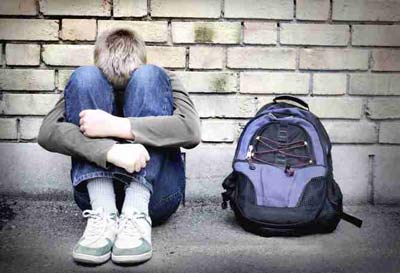well then this can be summarized to be to put more attention in schools to prevent this type of abuse is very common these days, little by little children are destroying each other and we should not allow that if so small are treated when we can expect some adults are "responsible" so take care to children and report any abuse of any kind with the appropriate authority
Proyect XIII
viernes, 8 de junio de 2012
Triptych
http://www.4shared.com/file/XFhDZc6w/triptico_Bullying.html
here is the triptych to download it and read it
Bullying survey
1. - Do you think of bullying among children in schools?
2.-you have suffered any incident of this behavior in your family? you did to fix it
3.-which you think is the factor that causes a child to be violent?
4.-family problems induce this type of behavior in children?
5.-use or uses that measures to prevent their children behave this way?
6.-schools should implement measures for this behavior up to this wing?
7.-think the government should invest in a public organization to deal with this behavior?
8.-think this issue is less important? or death until you put attention
2.-you have suffered any incident of this behavior in your family? you did to fix it
3.-which you think is the factor that causes a child to be violent?
4.-family problems induce this type of behavior in children?
5.-use or uses that measures to prevent their children behave this way?
6.-schools should implement measures for this behavior up to this wing?
7.-think the government should invest in a public organization to deal with this behavior?
8.-think this issue is less important? or death until you put attention
recommendations for the avoidance of bullying
Primary prevention would be the responsibility of parents (commitment to a democratic and authoritarian education) of society as a whole and the media (in the form of self-regulation for certain content). Secondary prevention measures would be specific about the population at risk, that is, adolescents (primarily to promote a change in attitude towards the need to report cases of bullying but do not become victims of them), and population directly linked to this, teachers (in the form of training in appropriate skills for conflict prevention and resolution of school). Finally, tertiary prevention measures would help those involved in cases of bullying.


Types of bullying
Social blockade (29.3%)
Groups bullying actions that seek to block the victim socially. They all seek social isolation and marginalization imposed by blocking these behaviors.
Harassment (20.9%)
Those grouped bullying behaviors consisting of acts of harassment and bullying that manifest disregard, disrespect and disregard for the dignity of the child
Handling (19.9%)
Those grouped bullying behaviors that seek to distort the image of the child and "poison" to others against him. They aim to present a negative image, distorted and negative charge of the victim.
Constraints (17.4%)
Agrupa aquellas conductas de acoso escolar que pretenden que la víctima realice acciones contra su voluntad. Mediante estas conductas quienes acosan al niño pretenden ejercer un dominio y un sometimiento total de su voluntad.
Social exclusion (16.0%)
Grouped bullying behaviors that seek to exclude from participation in the child harassed. The "you do not," is the center of these behaviors with the group that harasses the child socially segregated
Intimidation (14.2%)
Those grouped bullying behaviors pursuing deterred, intimidate, belittle or consumed by the child emotionally intimidating actions.
Groups bullying actions that seek to block the victim socially. They all seek social isolation and marginalization imposed by blocking these behaviors.
Harassment (20.9%)
Those grouped bullying behaviors consisting of acts of harassment and bullying that manifest disregard, disrespect and disregard for the dignity of the child
Handling (19.9%)
Those grouped bullying behaviors that seek to distort the image of the child and "poison" to others against him. They aim to present a negative image, distorted and negative charge of the victim.
Constraints (17.4%)
Agrupa aquellas conductas de acoso escolar que pretenden que la víctima realice acciones contra su voluntad. Mediante estas conductas quienes acosan al niño pretenden ejercer un dominio y un sometimiento total de su voluntad.
Social exclusion (16.0%)
Grouped bullying behaviors that seek to exclude from participation in the child harassed. The "you do not," is the center of these behaviors with the group that harasses the child socially segregated
Intimidation (14.2%)
Those grouped bullying behaviors pursuing deterred, intimidate, belittle or consumed by the child emotionally intimidating actions.
Suscribirse a:
Comentarios (Atom)










